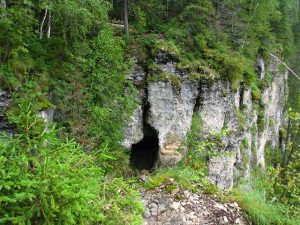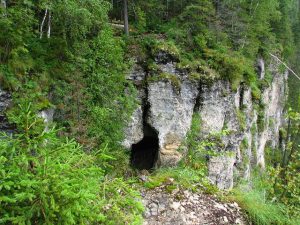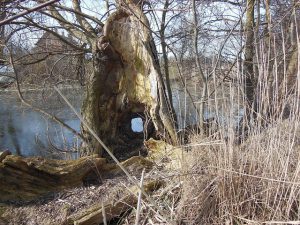Top 10 Natural Shelters every Survivalist must know

If an emergency situation is happening, it may be better to hide inside your house because it is easier to survive when you have many tools and commodities. But there are situations when it is necessary to leave your home. Even if your survival plan is all about hiding inside, you must have a backup plan that will help you to bug out if it’s needed.
One of the most important aspects of such a plan is to prepare your survival kit with items such as a tarpaulin and paracord. You can learn here how to build the ultimate disaster survival kit for free. But even if you create a great kit, you still can’t be sure that you’ll be able to survive without any problems. Of course, if you don’t have such a kit, you will face troubles. Unfortunately, even with a decent kit, you can’t always take everything you want with you, meaning you may have to leave some tools, a tarpaulin or even tent at home.
A tent is not the only thing that can be used as a shelter, but its advantage is that it is easier to set it up and there is no need to spend time searching for materials and building a shelter. One great idea is to know how to use shelters made by nature. Once you have the knowledge to look at objects in nature from a survival perspective, you’ll be able to find an emergency shelter almost anywhere you bug out.
The best survival shelters you can find in nature;
- Caves. Here is the best shelter created by nature. A cave can help you to hide from bad weather conditions and also it is a great way not to be noticed by any wild animals that can hurt you. There is only one disadvantage in such shelters: some creatures are usually living there. So, when you find a cavern and you decide to go in, make sure if there are no people or wild animals already living there! You’ll find caves along rocky shorelines but also inland especially where the underlying bedrock is limestone or chalk.
- Undercut riverbank. Such a bank can help you to hide if it’s raining, but unfortunately, it’s not as good as a cavern. If several trees are located right in front of this bank, then it may save you even from the wind. Undercut bank can be a great shelter but check them for stability first. Also be extra cautious of rising river levels if it is raining hard.
- Underneath a fir tree. Many fir trees (and even cypress trees) have huge branches that are long enough to touch the ground. If you are staying under the branches, you’ll have enough space to feel comfortable. Don’t forget to cut some dead parts of these branches, so that it’ll be even more comfortable for you to stay there. Coniferous species such as this have the added benefit of providing a blanket of old foliage on the floor as well as drying the soil out in an area on the floor as large as the canopy.
- Deadfalls. These can actually help you a lot in solving many survival problems ranging from dead wood for burning, to providing structural support for shelter building. The roots are strong enough and they can be used as a wall of the shelter, or you may find an uprooted tree with a cavity underneath the roots. You can cut or snap some branches from the underside of a fallen trunk which will create a comfortable space for you. Usually, deadfalls have other trees or even rocks that surround them, meaning that these deadfalls are protected well from the bad weather.
- Rock structures. It is possible to find many huge rocks that are naturally located in formations that create great shelters. You can improve such rock structures by putting a tarp or foliage on its roof, for added protection. Such spots can also protect you from wild animals, or at least ensure that you can keep all sides except the entrance vulnerable.
- Things left by people. It may sound a little bit unpredictable, but it is possible to find things that were built by people even in the deepest areas of the forest. Human beings have lived in different areas for hundreds of years and may have left structures that look abandoned or wild today. It is possible to find some buildings or parts of constructions that were created by them, although at first, it may look like unusable. Many spots may be used as shelters as they are, or just be raided for materials that can be used to create shelter.
- Against a vertical face. Depending on the direction of the prevailing wind, it may be possible to find shelter from the elements by simply tucking in against a vertical face (such as against a rock face or embankment). Even if it is raining there is a phenomenon of ‘rain shadows’ against such faces. You may not stay 100% dry, but you’ll be guarded from the worst of the rain and wind.
- Lairs of animals. There are wild animals that create lairs to sleep and reproduce. They remove all the plants and everything that may be uncomfortable for them. Animals often don’t sleep or rear their young in the same lair several times; usually, they create or use new ones leaving the previous lairs. So, if you are lucky enough to find such a spot, you can use it as a shelter, although it may be a little bit small or uncomfortable for you.
- Trees. If you stuck in a terrible situation where you can’t find any natural shelter, just choose a big tree and create a camp under it. Sometimes if you’re sitting under the tree when it’s raining you may be completely dry. It depends on the thickness and type of leaves and the direction of rain. Be careful about choosing the tallest tree if there is lightning. Choose a smaller tree that is less likely to be struck by lightning.
- Trees with hollows. If you find a tree that has a big hollow, it may be used as a cavern. These are generally smaller spaces which have the added benefit of being more comfortable for sleeping and will keep the warm in better than more open shelters.
Now you know the best natural survival shelters
By looking at the world from a survival perspective you’ll begin to observe the opportunities for shelter that are all around you. Natural environments have been lived in by our ancestors for hundreds or thousands of years. By learning to look for the opportunities presented by our environment there should be no reason to perish from the lack of shelter when we are faced with a bug out scenario.
Author Bio
Based in the UK, Jim has been teaching survival skills as a countryside ranger for over 20 years. For more free survival tips visit his website at ClickSurvival.com
The post Top 10 Natural Shelters every Survivalist must know appeared first on Survival Frog Blog.


